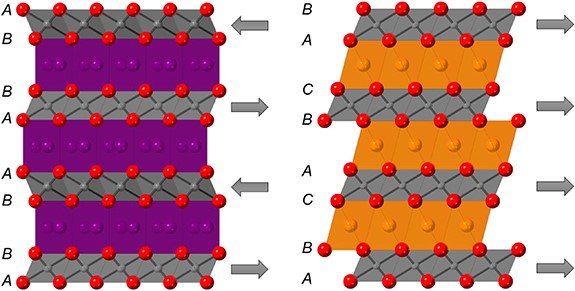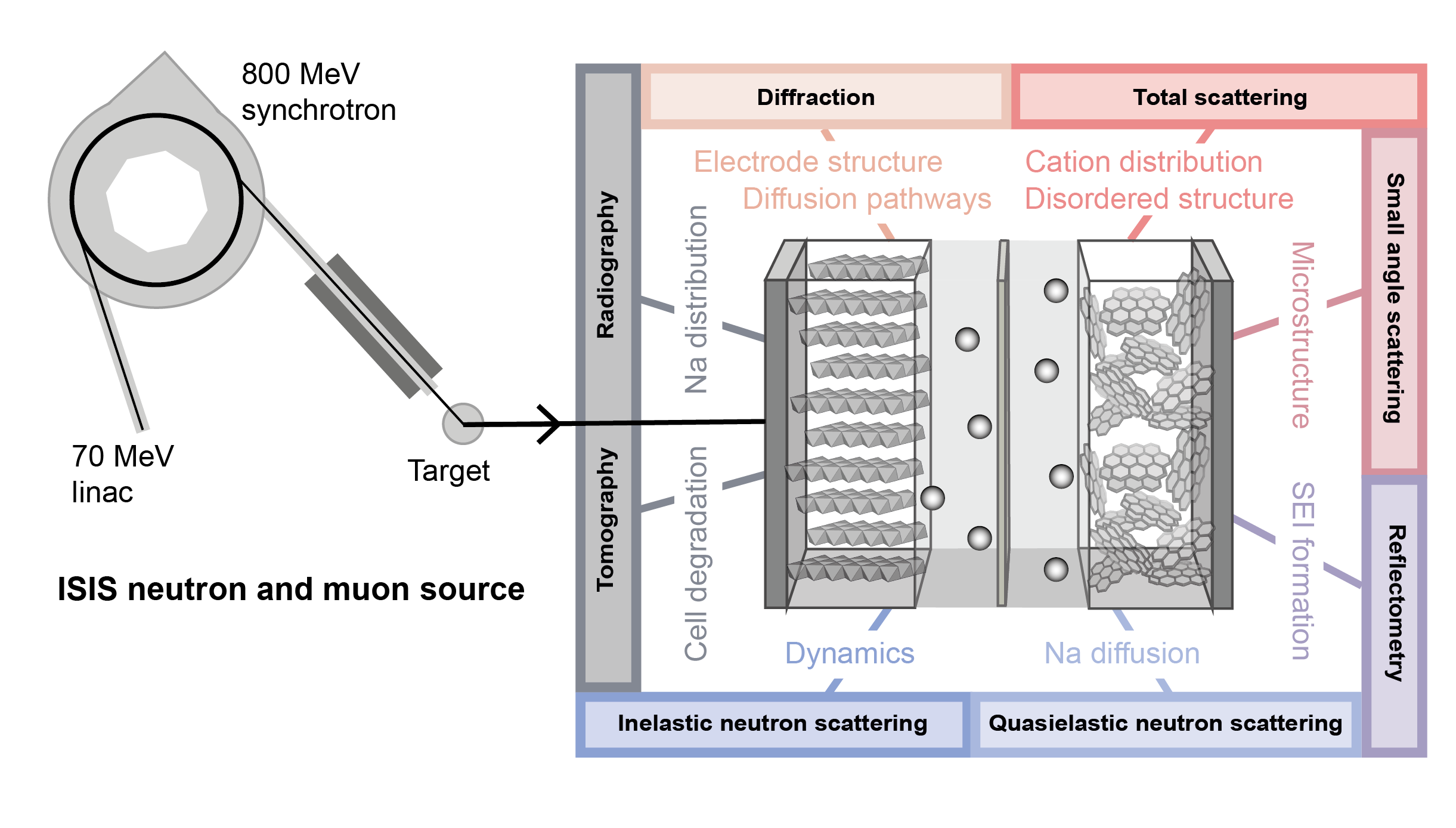Lithium-ion batteries dominate today's high performance battery market but, with energy storage demands set to increase and with issues around the growth, sustainability and environmental impact of lithium supply, the development and commercialisation of alternative battery technologies is essential.
This commercial expansion beyond 'only lithium' has recently begun with Tesla battery supplier CATL, the world's largest lithium-ion battery manufacturer, announcing in July 2021 that they will create an industrial chain for sodium-ion batteries by 2023. The high abundance of sodium and its similar electrochemical properties to lithium means that these batteries can replace lithium-ion batteries in applications such as stationary energy storage and low-cost vehicles.
Although lithium-ion and sodium-ion batteries have a similar performance, the atomic structures of the cathode materials differ. Specifically, sodium ions can form an additional structural type to lithium (as shown below). Importantly, this second structure, trigonal prismatic coordination, offers a significantly improved ion-conduction pathway, which in turn has the potential to produce higher power performance.
Published in JPhys Energy, the 2021 roadmap to sodium-ion batteries reviews the current state-of-the-art technology, and discusses the different research directions and strategies underway to improve the performance of sodium-ion batteries. In one of the articles that forms the collection, researchers Jake Brittain, Tom Wood and Bill David from ISIS report on their research on the best-performing layered cathode materials, variants of which are being commercialised by CATL.

Crystal structures of P2 (left) and O3 (right) materials. Sodium ions are in trigonal prismatic (purple) and elongated octahedral (orange) geometries, respectively. The metal layers are shown in grey, with their directionality indicated by the grey arrows.
Combining these two types of layered materials into a single cathode creates the opportunity to make systems that exhibit the favourable properties of both structures: the high ionic mobility seen in P2-based systems and the high capacity offered by O3-based systems. In addition to their excellent electrochemical properties, these materials are synthesised solely from 'earth-abundant' materials, which mitigates the environmental impact of production. Investigations into these materials are ongoing as part of the NEXGENNA project, funded by the Faraday Institution.
Jake, Tom and Bill commented that: “Our diffraction studies at ISIS and Diamond Light Source coupled with our electrochemical measurements have confirmed that the structural flexibility of these materials do provide an important opportunity to develop sodium-ion batteries that will complement lithium-ion technologies, but with lower cost, greater sustainability and lesser environmental impact."
Throughout the roadmap, the use of neutrons in characterising sodium-ion battery materials is emphasised; this emphasis is the sole focus of one of the articles in the collection, written by ISIS staff members Emily Reynolds and Martin Owen Jones. Neutrons are a key tool in the investigation of these materials through their visibility of light elements such as lithium and sodium, their uniquely differing strengths of interactions with transition metals and their highly penetrating nature that enable in operando measurements to be performed.
From fundamental structural studies to the investigation of working batteries, neutron scattering plays a key role in all the stages towards making sodium-ion batteries a commercial reality, which will contribute globally to the development of a more sustainable future.
The schematic below illustrates the range of neutron characterisation techniques offered at the ISIS Neutron and Muon Source is extensive, with many different applications across the whole of the sodium-ion battery system. 
"We are really keen to show the battery community how the many neutron techniques offered at ISIS can be used to understand the different structural and dynamic aspects of battery components," explains Emily Reynolds; “In parallel with utilising the current facilities we are also developing new sample environments and simultaneous characterisation that will improve the battery-specific capabilities at ISIS. Weakly interacting neutrons are the ideal probe for studying operating cells, and this is something we are focusing on."
